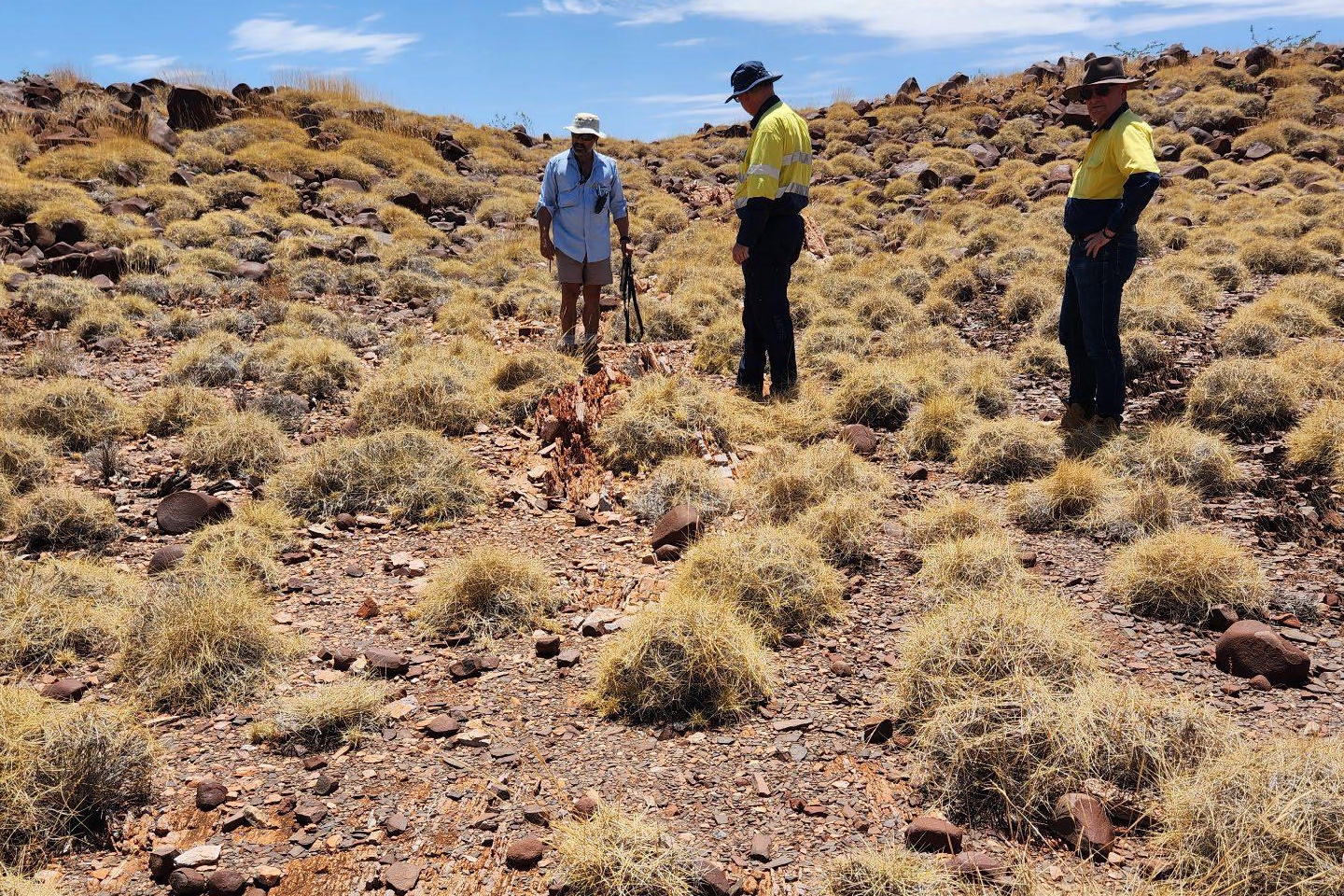A GreenTech Metals rock-chip sampling campaign has nailed new lithium hits along an east-west-trending, 2.5km-long pegmatite zone at its Kobe trend in Western Australia’s Pilbara region, with the best results ranging from 1.01 to 2.31 per cent lithium oxide. The company says the results demonstrate the local persistence of high-grade lithium along the western part of the Kobe trend.

A GreenTech Metals rock-chip sampling campaign has nailed new lithium hits along an east-west-trending, 2.5km-long pegmatite zone at its Kobe trend in Western Australia’s Pilbara region, with the best results ranging from 1.01 to 2.31 per cent lithium oxide.
The company says the results demonstrate the local persistence of high-grade lithium along the western part of the Kobe trend. The best grades from six separate samples include lithium oxide values topped with the 2.31 per cent high, in addition to 1.72, 1.37, 1.24, 1.23, 1.2 and 1.01 percent lithium oxide. The top hit includes 25 parts per million tantalum pentoxide and 120ppm niobium pentoxide, while following results lie in the range of 21ppm to 70ppm tantalum pentoxide and 81ppm to 118ppm niobium pentoxide.
The company says the presence of the principal lithium ore mineral spodumene has been confirmed in its rock samples by X-ray diffraction analysis.
The current suite of samples was collected from a 2.5km-long mid-section of the 7.5km long east-west to east/south-east-trending Kobe line of pegmatite outcrops, which extends into the north-western corner of the company’s adjacent “Osborne” joint venture (JV) licence it shares with Artemis Resources. GreenTech holds a 51 per cent share and Artemis holds the remaining 49 per cent.
GreenTech Metals executive director Tom Reddicliffe said: “Exploration of these key targets in our West Pilbara lithium portfolio continues to yield exceptional results. These latest sampling assays continue to demonstrate the continuity of lithium mineralisation along the 7.5km Kobe pegmatite trend. Diamond Drilling is already underway at Kobe to acquire stratigraphic and structural information and subsurface characteristics of these pegmatite zones ready for follow-up drilling early next year.”
Just eight days ago, GreenTech revealed it had encountered pegmatite intersections up to 24.6m thick in its maiden diamond drillhole that plumbed depths to 810.2m in the separate “Southern” trend in the Osborne JV ground. That diamond hole is about 7.5km south-east of the company’s latest rock-chip sampling at Kobe in its “Northern” trend, which lies inside and parallel to the northern boundary of the company’s 100 per cent-owned Ruth Well licence.
GreenTech believes its highlight hit in the diamond hole from 674m depth could represent a 550m-deep down-dip extension of a pegmatite it had mapped at surface and it is drilling a second hole at Osborne to test a separate part of the southern pegmatite zone, about 350m east of the first hole. Soil and rock-chip sampling is continuing with samples submitted for analysis and a maiden diamond drilling program is planned for the end of the year to test Kobe.
Reddicliffe says a targeted and more detailed program of drilling in both the Ruth Well and Osborne JV ground would kick off in the new year once a full interpretation of the company’s results is completed. He says GreenTech will continue work to systematically unlock the scale and mineralised potential of its tenements in the West Pilbara region, which has quickly become one of the premier global addresses for hard-rock lithium exploration, with some of the world’s biggest deposits.
They include Pilbara Minerals’ Pilgangoora project, which produces about 370,000 tonnes per annum of spodumene concentrate, and the Mineral Resource/Albemarle Wodgina JV that includes a spodumene concentrate processing plant featuring three trains, each with a capacity of 250,000 tonnes per annum of 6 per cent spodumene product.
Is your ASX-listed company doing something interesting? Contact: matt.birney@businessnews.com.au
















